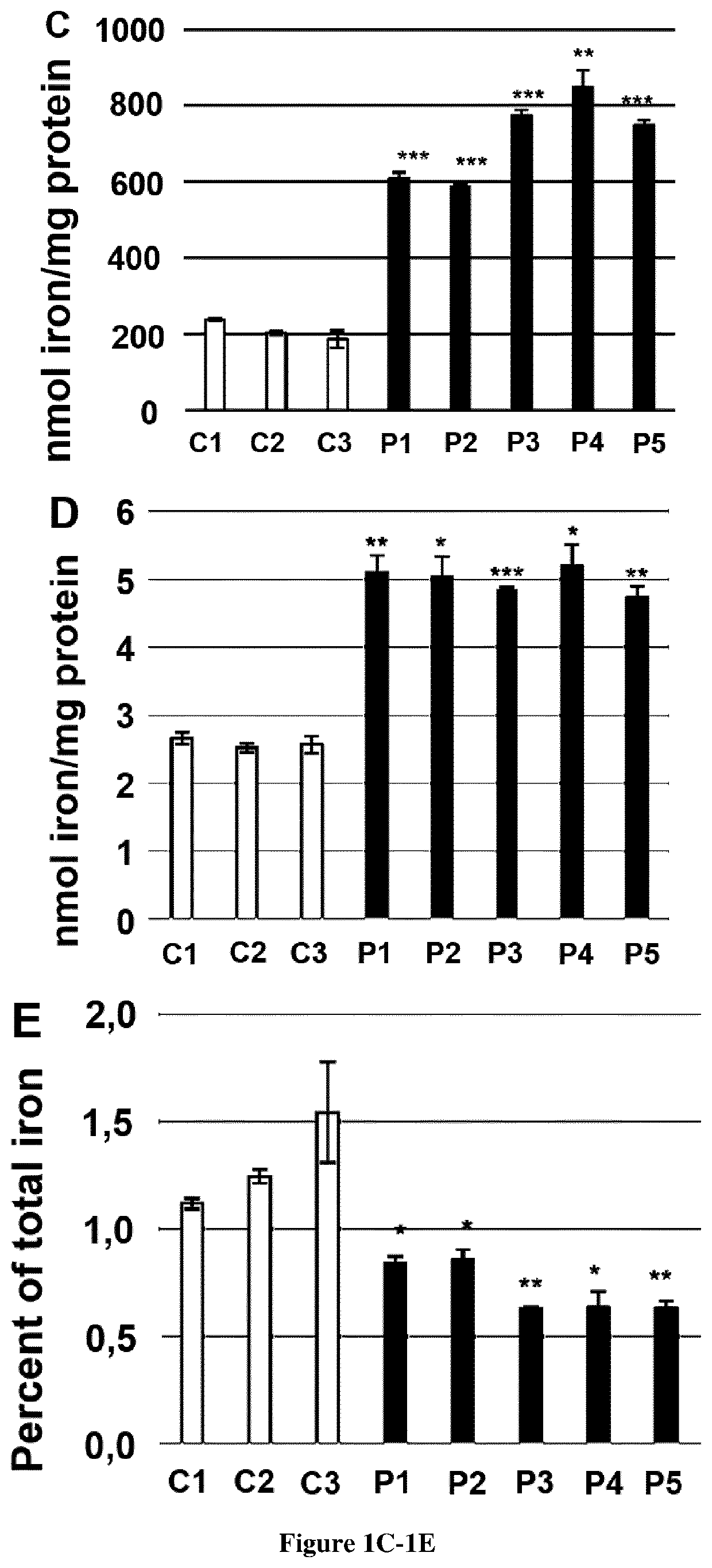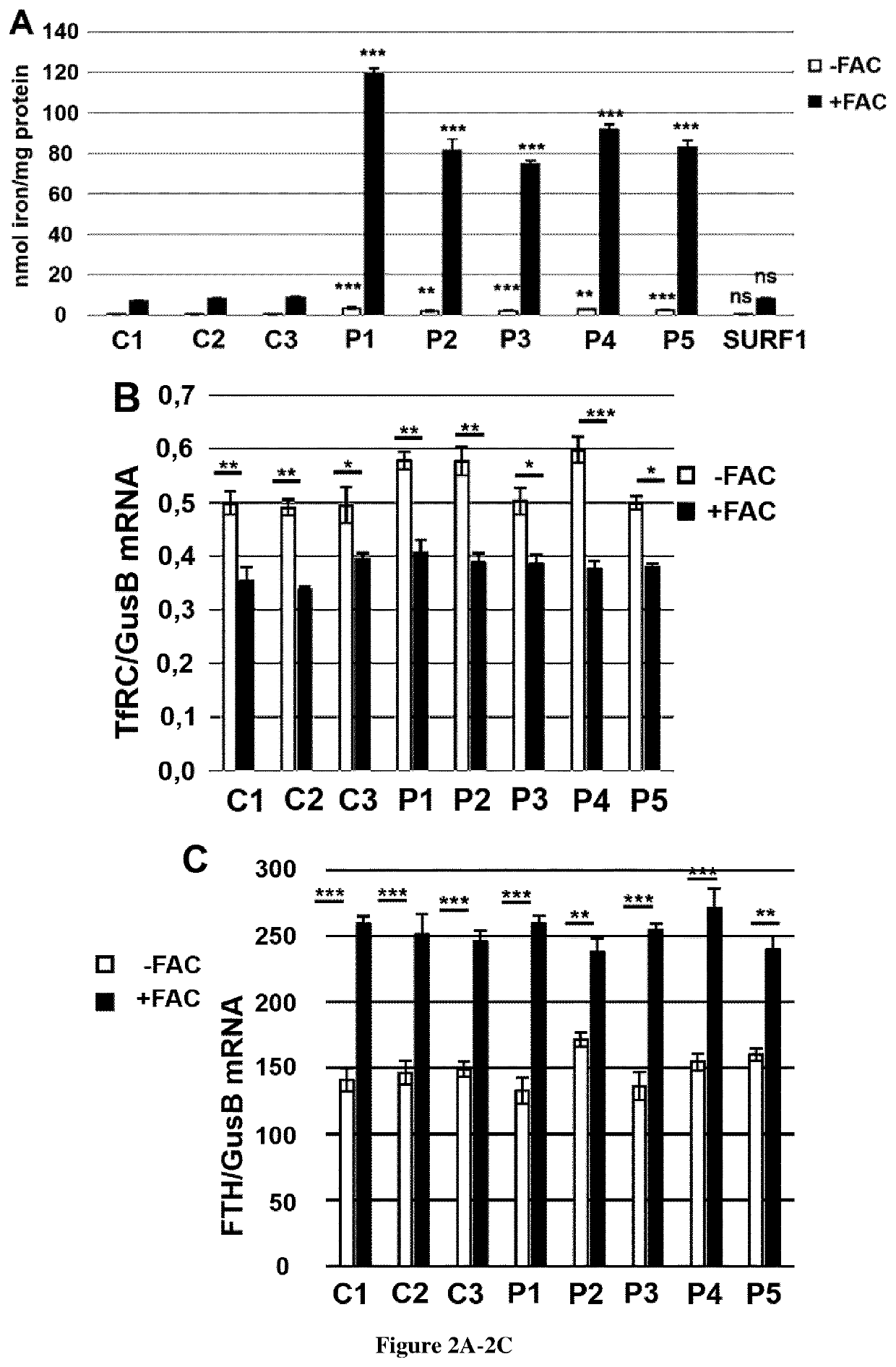Treatment and prediction of therapeutic responses in patients suffering from friedreich ataxia
a technology of friedreich ataxia and treatment and prediction, applied in the field of methods of treating friedreich ataxia, can solve the problems of unexplored existence of a similar mechanism in frda and incomplete understanding of the consequences of frataxin deficiency
- Summary
- Abstract
- Description
- Claims
- Application Information
AI Technical Summary
Benefits of technology
Problems solved by technology
Method used
Image
Examples
example
[0036]Methods:
[0037]Informed consent for diagnostic and research studies was obtained for all subjects in accordance with the Declaration of Helsinki protocols and approved by local Institutional Review Boards in Paris.
[0038]Patients
[0039]Patients carried GAA repeat expansions in the first intron of the frataxin gene.
P12.1 and 2.1 kbP23.0 and 3.6 kbP32.1 and 2.7 kbP42.4 and 2.4 kbP5P62.1 and 2.4 kbP72.2 and 2.8 kbP82.4 and 2.7 kbP91.5 and 2.4 kbP102.5 and 3.0 kbP111.7 and 1.9 kbP122.8 and 2.8 kbP132.9 and 3.4 kbP142.5 and 2.5 kbP152.6 and 2.6 kbP162.5 and 2.5 kb
[0040]Cell Culture
[0041]Skin fibroblasts were grown in Dulbecco's Modified Eagle Medium (DMEM, Life technologies) medium supplemented with 10% fetal bovine serum (FBS), 2 mM L-glutamine, 2.5 mM pyruvate, 100 μg / ml streptomycin, 100 U / ml penicillin at 37° C. For treatment with ferric ammonium citrate (FAC), 80% confluent cells were incubated for 72 h with or without 100 μM FAC in serum-free DMEM (i.e. Tf free). For drug treatm...
PUM
| Property | Measurement | Unit |
|---|---|---|
| total volume | aaaaa | aaaaa |
| pH | aaaaa | aaaaa |
| time | aaaaa | aaaaa |
Abstract
Description
Claims
Application Information
 Login to View More
Login to View More - R&D
- Intellectual Property
- Life Sciences
- Materials
- Tech Scout
- Unparalleled Data Quality
- Higher Quality Content
- 60% Fewer Hallucinations
Browse by: Latest US Patents, China's latest patents, Technical Efficacy Thesaurus, Application Domain, Technology Topic, Popular Technical Reports.
© 2025 PatSnap. All rights reserved.Legal|Privacy policy|Modern Slavery Act Transparency Statement|Sitemap|About US| Contact US: help@patsnap.com



